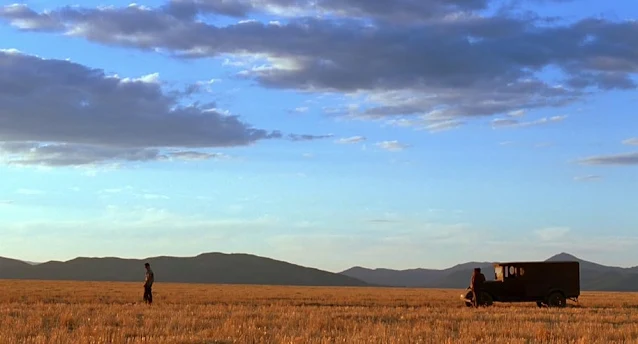"The Devil's Backbone" unfolds in a remote orphanage in Spain during the final days of the Spanish Civil War. The story centers around a young boy, Carlos, who is left at the orphanage and soon discovers that it harbors dark secrets, including the ghost of a former resident. The orphanage, isolated and shadowed by the war, becomes a microcosm of the outside world, filled with fear, betrayal, and loss.
Guillermo del Toro's craftsmanship in thematic storytelling is vividly apparent. He skillfully interlaces the motifs of innocence, loss, and the stark brutality of war into the film’s intricate narrative fabric. The ghost story, central to the film's plot, transcends the conventional bounds of horror. It serves as a profound metaphor for the enduring scars wrought by war, encapsulating both the tangible and psychological remnants of conflict. This spectral presence in the orphanage is not merely a source of fear; it represents the unresolved tragedies of the past, the voices left unheard, and the fates unjustly sealed by the cruelties of war.
Del Toro’s narrative delves deep into the psyche of its characters, particularly the children, who are depicted navigating a world tarnished by violence and overshadowed by the uncertainties of a war-torn Spain. These children, in their resilience and vulnerability, embody the innocence that becomes a casualty to the inexorable march of conflict. Their interactions, fears, and hopes paint a vivid picture of a lost childhood, one that is prematurely introduced to the complexities and horrors of an adult world in turmoil.
Moreover, the film poignantly comments on the loss of innocence, not just as a personal experience but as a generational aftermath of war. Del Toro illustrates how the innocence of youth becomes a silent victim in the throes of conflict, an aspect often overshadowed by the more visible devastations of war. The children's experiences in the orphanage, set against the backdrop of political and social upheaval, become a microcosm for the broader impacts of war on society and the human spirit.
Yet, amidst this portrayal of loss and brutality, "The Devil's Backbone" is imbued with a sense of hope and the resilience of the human spirit. The characters, particularly the children, demonstrate an incredible capacity for adaptation, solidarity, and courage. Their journey in the film is not just one of survival but also of self-discovery and defiance against the forces that seek to define their fate. This resilience serves as a powerful counterpoint to the themes of loss and brutality, offering a nuanced exploration of the human condition under the most adverse circumstances.
The film's visual aesthetic is one of its standout features. Del Toro's use of eerie imagery, shadowy landscapes, and a muted color palette creates a sense of foreboding and melancholy that pervades the film. The ghost, represented not as a mere horror trope but as a tragic figure, adds to the film’s atmospheric depth. The cinematography is both beautiful and haunting, effectively conveying the story's emotional and thematic undertones.
The performances in "The Devil's Backbone" are remarkable, particularly from the young actors who portray the orphans. The characters are well-developed, each carrying their own traumas and hopes, which are skillfully brought to life by the cast. The dynamics between the children and the adults in the orphanage add layers of complexity to the narrative, reflecting the broader societal impacts of war and conflict.
"The Devil's Backbone" is a film that stays with you long after the credits roll. It's a testament to del Toro's ability to blend genres and themes to tell stories that are both profoundly human and visually captivating. The film is not just a ghost story; it is a narrative about the ghosts of history, the enduring impact of war, and the indomitable nature of the human spirit. For fans of del Toro's work and for those who appreciate cinema that combines horror with deeper societal commentary, "The Devil's Backbone" is an essential and unforgettable viewing experience - also try The Shape of Water, Del Toro's Academy Award winning masterpiece.
















